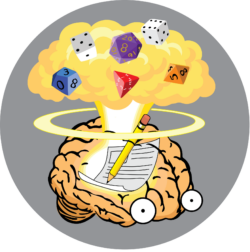I realize every day, and I get flashbacks about key concepts I have to explain at length. Like how Contribution Margins Work, How everyone affects Cashflow, and how our Constraints affect our decisions in our operations. I need to say to it even if I know I may successfully communicate with one out of all the audience stakeholders. At worse, I need them to lose patience with me and explain their situation, because they are reluctant to give feedback that some of them are so conditioned with learned-helplessness that they’d rather tolerate a broken system than work to fix it.
An example recently was the 40 projects competing for three resources. It’s a story I use to explain why project schedule matters, but even when I tell that story, our Policies don’t reflect that Common sense “Alam ko yan” (translated: “I know that already”) Reaction people have but we still have status quo.
Or that Reports have to be designed in mind of the audience and their critical information. They write the Log without making it user-friendly, and people cannot intuitively find their information. They assume the audience is stupid and do not get feedback on how the audience processes the data. I understand that “I know that already” look but no action. Right now, the Project Monitoring Log is merely a Log – because it has no Audience that gives it feedback. I need to change it, but I have problems with the Plant Manager blustering – a habit he acquired when the Plant keeps making adjustments to Makati Ops as a downstream department on the receiving end of a process (when makati chooses to give garbage to the plant nothing happens but the plant doing all the rework; if the Plant is not a hard-ass then Makati would have exhausted all the patience of the plant and destroyed the organization of the plant).
What happens is I think of a story to explain the current model of our operations and problems. I go to each stakeholder group and use it to try to influence why some of their actions are counterproductive (local optima E. Goldratt) and does not maximize the total throughput. But Of course, there are many complications; there are many systems in place for the Local Optima Policy. I have to tell the story over and over again to different people with different perspectives on the system. The stories change depending on where they are in the vast machine of the company.
I realize this is the exercise of Teaching – every storytelling refining the model and discovering new ways this model escapes comprehension. As well as accumulating more ways to tell this story or model a helpful understanding.


Leave a Reply
You must be logged in to post a comment.